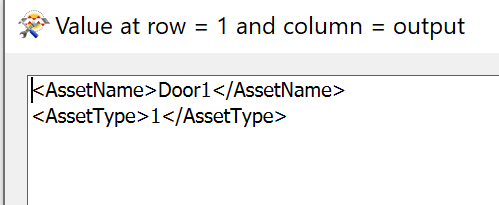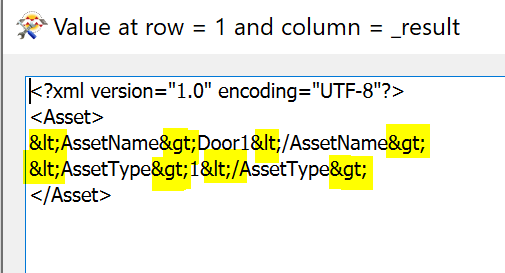Hi, I am using a PythonCaller to create an XML string. When I send this string through an XMLTemplater, all "<>" brackets are converted to "<" and ">" (html encodings). Adding a StringReplacer/StringPairReplacer to replace all brackets works fine but can take some time for larger content . Is there a way to prevent the XMLTemplater from converting brackets to encoded brackets?
 becomes:
becomes:









